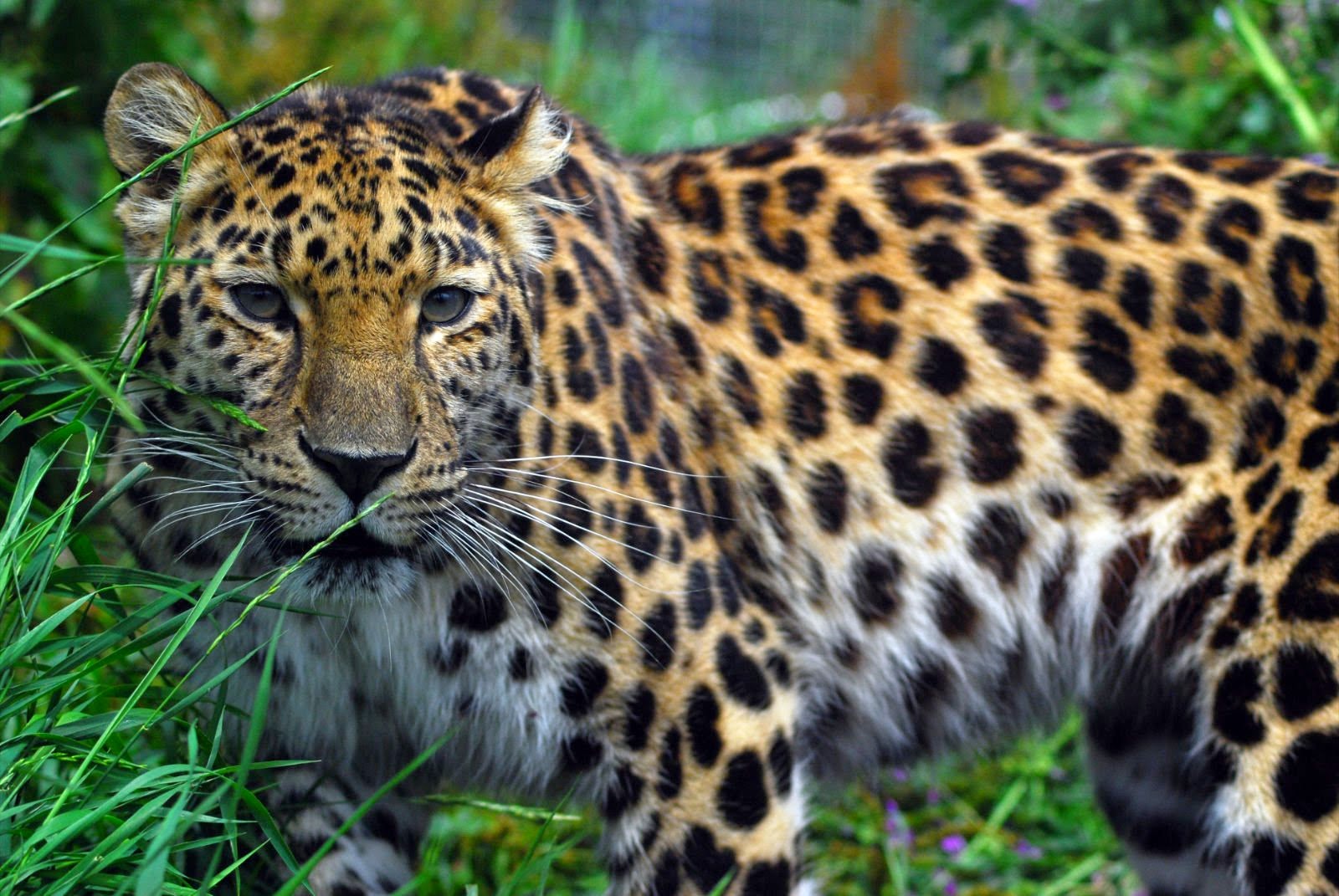The Amur leopard (Panthera pardus orientalis)
is a leopard subspecies native to the Primorye region of southeastern Russia
and Jilin Province of northeast China, and is classified as Critically
Endangered since 1996 by IUCN. Only 14–20 adults and 5–6 cubs were counted
in a census in 2007, with a total of 19–26 Amur leopards extant in the wild.
Amur leopards differ from other subspecies by a thick coat
of spot covered fur. They show the strongest and most consistent divergence in
pattern. Leopards from the Amur river basin, the mountains of north-eastern China and the Korean
peninsula have pale cream-colored coats, particularly in winter. Rosettes
on the flanks are 5 cm × 5 cm (2.0 in × 2.0 in)
and widely spaced, up to 2.5 cm (0.98 in), with thick, unbroken rings
and darkened centers.
At least 57 Amur leopards now exist in Russia’s Land of the Leopard National
Park, up from just 30 cats counted in 2007, according to new census data
announced last week. An additional 8 to 12 leopards were counted in adjacent
areas of China, meaning the number of Amur leopards, a rare subspecies
considered the world’s rarest wild cat, has more than doubled over the past
seven years.
The census - taken with camera traps spread out over more than 900,000 acres
of primary leopard habitat - collected around ten thousand photographs which
scientists used to identify nearly 60 individual animals, judging by the
distinctive pattern of spots on the leopards’ fur. The census was carried out
by the Land of the Leopard National Park jointly with the Far Eastern Branch of
the Russian Academy of Sciences, with the support of The Amur Leopard Center
and WWF-Russia.
“Such a strong rebound in Amur leopard numbers is further proof that even
the most critically endangered big cats can recover if we protect their habitat
and work together on conservation efforts” said Dr. Barney Long, who leads
Asian species conservation for World Wildlife Fund (WWF) in the US. “There’s
still a lot of work to be done in order to secure a safe future for the Amur
leopard, but these numbers demonstrate that things are moving in the right
direction.”
Land of the Leopard National Park, which includes all of the Amur leopard’s
known breeding areas, was hailed as a lifeline to the critically endangered cat
when
established in 2012. The park extends across nearly 650,000 acres, and is
also home to the endangered Amur tiger.
According to Yury Darman, head of WWF Russia Amur Branch and a member of the
Supervisory Board of The Amur Leopards Center, "The national park became
the main organizational force for leopard protection and research.”
Conservationists are working towards monitoring leopard populations across
the border in neighboring Chinese nature reserves. One of the highly
anticipated next steps would be the establishment of a Sino-Russian
transboundary nature reserve.



.jpg)
No comments:
Post a Comment